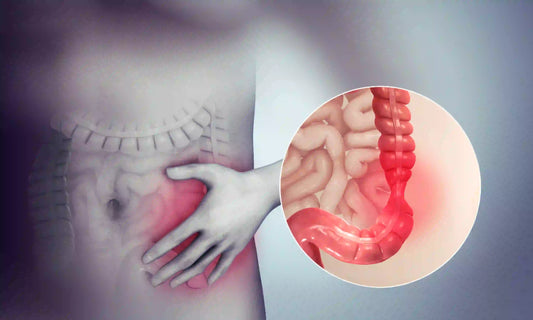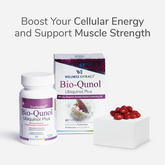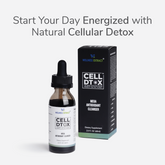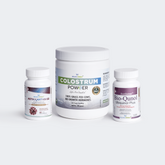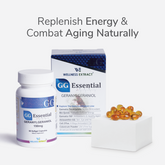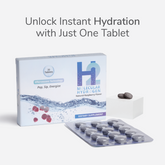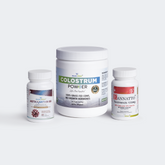Chronic stress can harm your heart.
Stress is your body’s natural response to pressure, triggered by new or unexpected situations. Some instances of stress include getting late for the office, getting stuck in traffic, a fight with a partner, and even that feeling before public speaking. In small amounts, stress can be helpful. It helps with performance in exams, meetings, or any major deadline.
However, feeling pressured and overwhelmed consistently for longer durations may be signs of chronic stress. Constant stress is harmful to your overall well-being. Do you know that chronic stress can also affect your heart? Therefore, it is essential to manage stress well in order to avoid heart disease. The very first step in managing stress is to understand its signs. But how many of you can recognize these hidden signs? Do not worry; this post will help you understand the effects of stress on the heart and the symptoms that you shouldn’t ignore. Since prevention is always better than cure and;
Managing your stress well will help keep your heart healthy.
How Does Stress Impact the Body and How is it Related to Heart Health?
Stress is an evolutionary mechanism that helps you react to any adverse situation. It’s very important to remember that stress is there to protect you and keep you alive. Stress works by releasing stress hormones like Adrenaline and Cortisol. These hormones enhance focus, raise heart rate and blood pressure, and improve blood flow to the heart and brain so you can safely deal with the danger you’re presented with.
However, when these stress hormones remain chronically elevated, they start posing significant risks on your health and blood vessels. Here's how:
-
Chronic stress damages the inner layers of your blood vessels, which significantly increases the risk for cardiovascular disease, such as heart attacks and strokes. It also leads to chronic raise in blood pressure, which further increases the risk of cardiovascular diseases and can even cause kidney, brain, and heart failure.
-
Stress doesn’t stop there. Long-term stress increases inflammation in the body, which increases plaque buildup in the arteries and can also increase the risk for heart attacks and strokes. Moreover, stressful states may contribute to picking up unhealthy habits like alcohol consumption, smoking, and poor diet that can significantly worsen the health of your heart and your whole body by increasing plaque buildup, inflammation, and cholesterol.
-
And finally, stress also makes your body store fat in the wrong places, namely around the liver and the pancreas. This increases the risk of insulin resistance and diabetes, which are significant risk factors for developing cardiovascular disease.
A 2017 study in The Lancet found that stress and heart problems go hand in hand. Emotional stress can lead to heart disease.
What Are the 5 Warning Signs Stress is Hurting Your Heart?
Recognizing the signs and effects of stress on the heart is crucial to preventing potential health and heart issues before they arise. Here are some of the signals triggered by chronic stress that indicate your heart may be suffering:
-
Muscle Tension or Chest Pain
When you're under stress, your body releases hormones like adrenaline, triggering the flight-or-flight response, which can tighten your muscles. Chronic stress keeps muscles in a prolonged state of tension, leading to pain in the neck, shoulders, and back. You may also clench your jaw. Stress can also cause a sensation of pressure or pain in the chest, which is often mistaken for heart problems, which occurs due to muscle constriction and rapid breathing linked to anxiety.
Important Note:
It’s important to seek medical attention if you have chest pain!
-
Rapid Heartbeat or Palpitations
Feeling your heart racing, fluttering, irregular heart rhythms (arrhythmia), or skipping beats could be a sign that stress is overstimulating your nervous system. Short-term stress releases hormones like adrenaline, noradrenaline, and cortisol, which make your heart beat faster. During stress, your body directs more blood to your muscles and heart — a helpful response during short-term stress.
But when stress becomes long-term, this persistent increase in heart rate and pressure can put strain on the cardiovascular system. Over time, it may contribute to arrhythmias and increase the risk of other heart conditions.
-
Shortness of Breath or Breathing Difficulties
Anxiety and stress can lead to shallow breathing or feeling out of breath, putting strain on your heart. When you’re under stress, you may notice changes in breathing. Shortness of breath or rapid breathing happens as stress can make the airways tighten, making it feel more challenging to breathe.
For those with lung conditions like asthma or chronic bronchitis, stress can make things worse.
-
High Blood Pressure
Chronic stress can elevate blood pressure, increasing the risk of heart disease and stroke. The release of adrenaline and cortisol during stress and chronic stress causes the blood vessels to constrict, thereby increasing blood pressure.
Chronic stress means the body remains heightened for an extended period. Prolonged periods of high blood pressure can damage blood vessels making them more likely to build up with cholesterol and cause a heart attack.
-
Atherosclerosis
If you had investigations by a heart specialist, and they see plaques in your heart vessels, then this is a sign that stress, high blood pressure, inflammation, insulin resistance, and high cholesterol have already affected your heart vessels, and your vessels are now narrowed and hardened.
So, the arteries become less flexible and more constricted, blood flow is restricted, which can increase the risk of heart disease, stroke, and other cardiovascular events, such as heart attacks and heart failure. This is why managing stress is a crucial step in preventing life-threatening conditions.
How to Manage Stress and Keep Your Heart Strong
If you want to keep your heart strong and your body stronger, you need to manage stress effectively. This is first done by adopting a healthy lifestyle and some simple habits for stress management to reduce the effect of stress on your heart.
1. Practice slow breathing:
Slow breathing (in particular slow exhalations) take your body out of the fight-or-flight response and help you feel calmer. Think about it: You can’t be breathing slowly when you’re being chased by a tiger.
2. Practice gratitude:
Gratitude is one of the most powerful habits to include in your daily life because it can shine light on what’s good in your life and help you reduce stress. When you focus on the good, the good gets better.
3. Express your feelings and thoughts:
Talking about your worries to a friend, family member, therapist, or a close one can help reduce stress. You can also consider professional counselling if you are suffering from chronic anxiety.
4. Journaling:
Writing down your feelings in a journal can help you process stress and improve emotional health.
5. Foster healthy relationships:
Maintain strong social connections, which provide emotional support and reduce stress hormones.
6. Eat a heart-healthy diet:
Add mono-unsaturated fats found in extra virgin olive oil and avocados, in addition to omega-3 fatty acids found in fish and walnuts. These fats have anti-inflammatory effects and help protect your heart.
Focus on the whole, unprocessed diet rich with fruits, vegetables, and lean proteins, while limiting excessive intake of ultra-processed foods, saturated fats, and sugar.
7. Prioritize quality sleep:
Establish a stable bedtime routine, maintain a relaxing bedroom environment, and avoid screens at least 30 minutes before sleeping. Aim for 7-9 hours each night.
8. Stay active:
Physical activity releases endorphins, which help improve mood, combat stress, and reduce physical and emotional pain.
9. Get regular health check-ups:
Routine screenings not only help detect potential heart issues early and ensure you’re taking the proper steps for prevention, but also reassure you about your health which reduces health-related anxiety and stress.
10. Take long walks in nature:
Taking long walks in nature is proven to reduce stress and cortisol
Everything Considered
Chronic stress is not just a mental strain. It can have serious and long-term effects on heart health. Warning signs, such as muscle tension, rapid heartbeat, shortness of breath, high blood pressure, and increased inflammation, signal that your body is under stress. Managing stress through healthy lifestyle habits, effective stress-reduction techniques, and seeking support when necessary is essential for protecting both your heart and overall well-being.
Making mindful choices like eating a balanced diet, staying active, prioritizing mental health, and including dietary supplements that your diet lacks can help break the cycle of stress. Remember, taking proactive steps to manage stress today will pay off in a healthier, happier future because your heart deserves the best care.
References:
-
BBC News. (2017, January 12). Brain activity “key in stress link to heart disease”. BBC News. https://www.bbc.com/news/health-38584975
-
National Heart, Lung, and Blood Institute. (2014, July 12). Emotional stress and heart disease in women: An interview with Dr. Viola Vaccarino. U.S. Department of Health and Human Services https://www.nhlbi.nih.gov/news/2014/emotional-stress-and-heart-disease-women-interview-dr-viola-vaccarino
-
MedlinePlus. (2025). Heart palpitations. U.S. National Library of Medicine. https://medlineplus.gov/ency/article/003081.htm
-
National Heart, Lung, and Blood Institute. (2021, September 13). Study links high levels of stress hormones to increased blood pressure, cardiovascular events. U.S. Department of Health and Human Services. https://www.nhlbi.nih.gov/news/2021/study-links-high-levels-stress-hormones-increased-blood-pressure-cardiovascular-events
-
American Heart Association. (2021, September 13). Elevated stress hormones linked to higher risk of high blood pressure and heart events. American Heart Association Newsroom. https://newsroom.heart.org/news/elevated-stress-hormones-linked-to-higher-risk-of-high-blood-pressure-and-heart-events


















